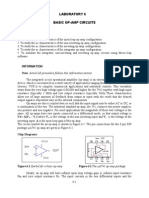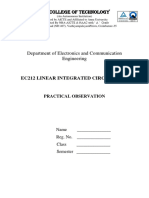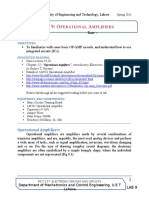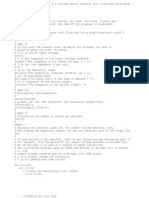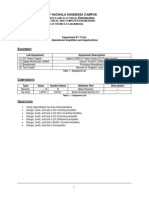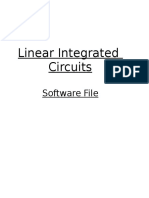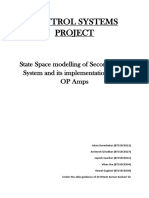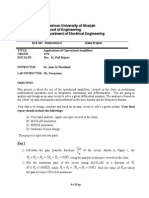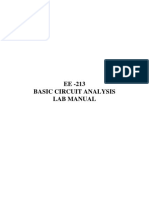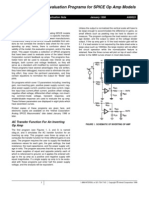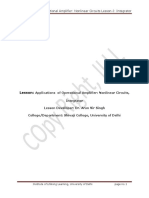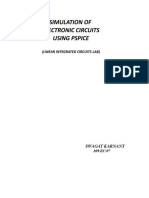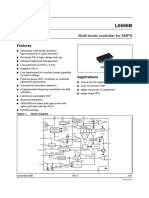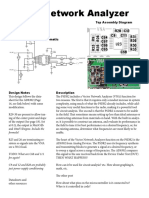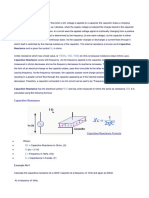0% found this document useful (0 votes)
57 views6 pagesHere Are Some MATLAB Codes For Simulating Different Op
The document provides MATLAB codes for simulating four types of Op-Amp circuits: Inverting Amplifier, Non-Inverting Amplifier, Integrator, and Differentiator. Each simulation includes circuit details, expected outputs, and MATLAB code to visualize the input and output signals. The expected outputs for each circuit are specified, illustrating the behavior of the Op-Amps with different input waveforms.
Uploaded by
VeeraCopyright
© © All Rights Reserved
We take content rights seriously. If you suspect this is your content, claim it here.
Available Formats
Download as PDF, TXT or read online on Scribd
0% found this document useful (0 votes)
57 views6 pagesHere Are Some MATLAB Codes For Simulating Different Op
The document provides MATLAB codes for simulating four types of Op-Amp circuits: Inverting Amplifier, Non-Inverting Amplifier, Integrator, and Differentiator. Each simulation includes circuit details, expected outputs, and MATLAB code to visualize the input and output signals. The expected outputs for each circuit are specified, illustrating the behavior of the Op-Amps with different input waveforms.
Uploaded by
VeeraCopyright
© © All Rights Reserved
We take content rights seriously. If you suspect this is your content, claim it here.
Available Formats
Download as PDF, TXT or read online on Scribd
/ 6






